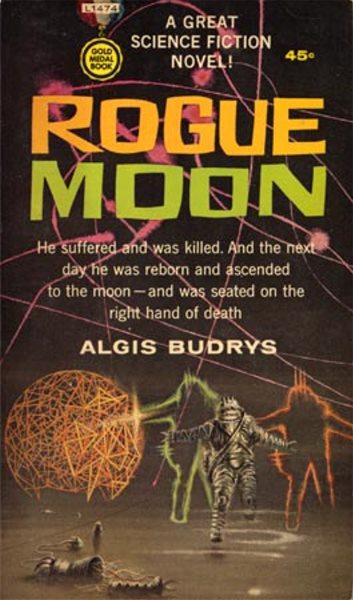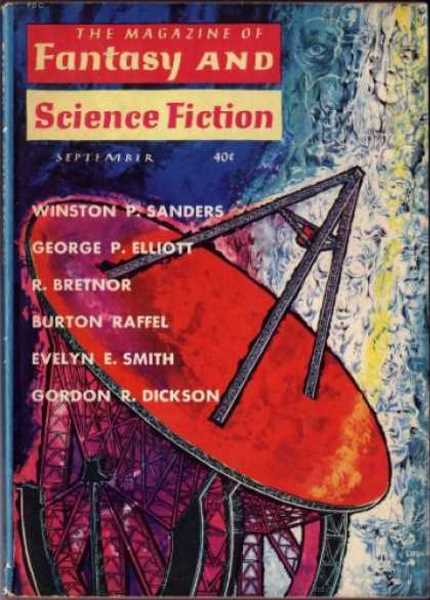If you've been a fan in the scientificition/fantasy genre for any length of time, you've likely been exposed to rumors of its impending doom. The pulps are gone. The magazines are dying. The best writers are defecting for the lucre of the "slicks."
And what is often pointed to as the cause of the greatest decline of an entity since Commodus decided he liked gladiating more than emperoring? The visual media: science fiction films and television. Why read when you can watch? Of course, maybe the quality's not up to the standards set by written fiction, but who cares?
All this hubbub is silly. There are two reasons why printed sf/f isn't going anywhere, at least for the next few decades. The first is that the quality isn't in the films or television shows. Sure, there are some stand-outs, like the first season of The Twilight Zone, and the occasional movie that gets it right, but for the most part, it's monsters in rubber suits and the worst "science" ever concocted.
But the second reason, and this is the rub, is the sheer impermanence of the visual media. If you miss a movie during its run, chances are you've missed out forever. Ditto, television. For instance, I recently learned that an episode of Angel (think I Love Lucy, but with a French accent) starred ex-Maverick, James Garner. I'm out of luck if I ever want to see it unless it happens to make the summer re-runs.
My magazines, however, reside on my shelves forever. I can re-read them at will. I can even loan them out to my friends (provided they pony up a $10 deposit). They are permanent, or at least long-lived.
And that's why I'll stick with my printed sf, thank-you-very-much.

Speaking of permanence, I think April 1961 will be a red-letter date remembered for all time. It's the first time, that I'm aware of, that women secured equal top-billing on a science fiction magazine cover. To wit, this month's Fantasy and Science Fiction features six names, three of which belong to woman writers. Exciting stuff, particularly given my observation that, while female writers make up only a ninth of the genre's pool, they produce a fourth of its best stuff.
Case in point: Evelyn Smith's Softly while you're sleeping is a clever piece about a young woman from the old country who is wooed by a passionate vampire. She ultimately resists his advances, unwilling to undergo the transformation that is the inevitable end of his draining attentions. The story is older than Stoker, but the writing and the social commentary are entirely modern. Four stars.
The Hills of Lodan, by the newish Harold Calin, on the other hand, is a comparatively clumsy piece. Think The Red Badge of Courage, but with a different kind of enemy. I appreciated the message, but the execution needs work. Two stars.
The next story is something special. Every so often, a story comes along that introduces something truly new. The Ship Who Sang, by new author Anne McCaffrey, brings us the lovely concept of sound-minded but hideously crippled children given mechanical bodies and groomed to become the "brains" of interstellar ships. These are two-person scout vessels, the other crew-member being the "mobile" element. Inevitably, the relationship is a close one, and this bonding makes up much of the plot (and charm) of Ship. In fact, if I have a complaint at all about this story, it is that it is too short; such an intriguing courtship should have more fully developed. McCaffrey's detached style feels a bit too impersonal for the piece, as well. Still, Ship gets an unreserved four stars.
If Anne McCaffrey had gotten the space reserved for the succeeding piece, a reprinted Robert Graves story called Dead Man's Bottles, I imagine the issue would have been much improved. Bottles features a minor kleptomaniac (a matches and pencil thief), an unpleasant wine aficionado, and the mysterious haunting that succeeds the latter's death. It's standard, low-grade F&SF filler. Two stars.
The third woman-penned piece of the book is Kit Reed's Judas Bomb, a sort of Post-Apocalyptic parable of the Cold War with gangs taking the role of nations. It's a quirky, layered piece, and I look forward to seeing more by this San Diegan turned Connecticutian. Three stars.

My Built-in Doubter is Isaac Asimov's article for this month, all about how science's apparent rigidity to crackpot ideas is a virtue, not a liability. Less information, more editorial, but a fun read, nevertheless. Four stars.
Richard Banks' Daddy's People is a stream of consciousness wall of words about an overlong bedtime story and the weird folks one meets when crossing the planes. It is difficult reading, and my first temptation was to give it a one-star review. Something restrains me, however. So I give it two stars.
Finally, Brian Aldiss is back with the sequel to the superb Hothouse: the superior, if not quite as excellent, Nomansland. This novella is set in the same steambath Earth of the future, when the Sun has grown hot, and the tidally locked Earth is dominated by semi-intelligent plant life. We get to learn what happened to Toy and the other human children after the departure of the adults into space. It's all a bit like Harrison's Deathworld without the high technology. Once again, Aldiss delivers the goods, although the third-person omniscient expositions, while informative, break the narrative a little. Four stars.
The overall score for this magazine is just over 3 stars — less than Galaxy's 3.5, and more than Analog's 2.5. Yet, despite the uneven quality of its contents, I feel it is in some ways the worthiest of this month's magazines. It takes risks; thus, its highs are higher. As predicted, most of the highs were provided by the female authors — and to think the State of Alabama still won't let women serve on juries…
As for this month's best story, I think Aldiss gets the nod, but just barely. I'd almost call it a tie between Nomansland and The Ship who Sang.
What do you think?
















